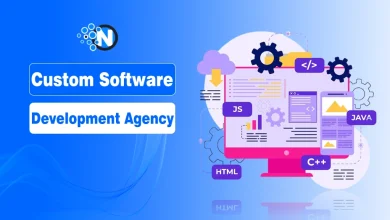Test-Driven Development and its Role in Building Reliable Software
Test-Driven Development plays a significant role in building reliable software. Generally, it works on simple yet powerful principles to define the desired behavior of the software. Recently, TDD has gained enormous popularity in developing high-quality software that can take the user’s experience to an advanced level. You can improve the software’s reliability, maintainability, and overall quality by implementing the codes to pass these tests. In this article, we will have a comprehensive understanding of test-driven development and its role in building reliable software. Further, we will also cover its principle, benefits, and use cases.
What is Test-Driven Development?
Test-driven development develops software by writing automated tests before implementing the code. It involves a complete cycle of creating a failing test to determine the desired functionality of the software. In addition, TDD helps you create minimum codes to pass the tests. Then, it is essential to refactor them for better design and interface. Test-driven development helps you improve the reliability and performance of the software by catching defects early and resolving issues by facilitating faster debugging. Therefore, it is gaining so much importance in software development.
How to Perform Test-Driven Development?
Carrying out test-driven development involves multiple steps, and you need to follow them precisely to enjoy maximum benefits. We have elaborated on them in the under-section.
1 – Write a Test
Firstly, you should begin by writing a test case representing the desired behavior or functionality of the software. It will fail as the corresponding functionality has not been implemented still.
2 – Take Small Incremental Steps
TDD allows you to make small codes to pass the current test only. Thus, the need to create and write larger codes is eliminated from the procedure. In this way, small-scale developers can also leverage this method.
3 – Refactor Continuously
Refactoring the code continuously will lead you to create a better design, interface, readability, and maintainability. Ultimately, you will be better adapted for future changes.
4 – Create a Testing Framework
Creating a testing framework enables you to design the software behavior you want to achieve. JUnit for Java and Pytest for Python are the most used frameworks to create a test case.
5 – Run the Test
After creating a testing framework and integrating a test case, you need to run it alongside all the existing tests. As the production code is absent, the test will fail to produce the desired results initially.
6 – Write the Minimum Code
After the test fails, you should create and implement a minimum amount of codes to make the failing test pass. Writing simple and focused codes can lead you directly to perform this operation effortlessly.
7 – Rerun the Tests
After adding the new codes, it’s time to rerun all the tests to see whether the functionality is added to the software. Additionally, performing these operations on pre-built software helps you determine that all the existing functionalities are working properly.
8 – Refactor the Code Again
If the previously integrated code adds the desired functionality to the software, you need to refactor it again. It will help you remove the redundancies and enhance its readability and performance.
9 – Repeat All Processes
To add more and more features or create software from scratch, you have to follow all the steps repeatedly.
Role and Benefits of Test-Driven Development

In the under-section, we have provided complete details on the role and benefits of test-driven development in building reliable software.
1 – Improved Code Quality
Test-driven development enforces you to write clean, clear, and well-tested codes to integrate the potential features in the software. Moreover, you can significantly reduce the defects in the development processes by identifying the glitches and introducing bugs into the database.
2 – Faster Debugging
As mentioned previously, you may experience multiple failures in a TDD cycle. When a test fails, the developers readily identify the necessary flaws as the new code is incompatible with the software’s infrastructure. Hence, they will carry out rapid debugging and troubleshooting procedures to maintain all the damages.
3 – Faster Feedback Loop
TDD enables you to learn about the correctness of the code directly after adding it to the software. If it remains successful, you can move to the next step. Otherwise, you can quickly pinpoint the problem and address it in an enhanced manner to move to the next task.
4 – Easier Maintenance
Possessing multiple testing frameworks makes it easier to carry out the maintenance procedures and enhance the codebase over time. By making good changes and additions to the codes, you can take the quality of the software to an advanced level. Hence, it helps you bring automation and efficiency to your working systems.
5 – Reduces Code Saturation
Creating numerous codes to add the necessary operations to your software will cause unnecessary saturation. Conversely, TDD allows you to create the necessary codes only, reducing the bloat and leading to a leaner and more productive code base.
6 – Create a Better Design
As the tests are designed before the code, test-driven development enables you to understand the desired functionality and API design upfront. Ultimately, you will create a more thoughtful architecture and interface for your software.
7 – Reduced Defect Density
By analyzing the codes at the early developmental stages of the software, you can easily determine the defects. In this way, you can create the working codes accordingly.
8 – Increased Test Coverage
Another exceptional role of TDD is increased test coverage to guarantee that a larger part of the code is subject to automated testing. It will not only promise you better results but also enhance the identification of potential issues.
Final Verdicts
Test-Driven development is now one of the most powerful software development methodologies, helping you build more reliable products. With so many benefits associated with them, you can easily prioritize test creation and incremental development. TDD lets you create only a small number of codes to add the desired operations and enhance the software’s interface. Furthermore, you can remove the potential flaws from the existing functionalities to improve its efficiency and working ability. Embracing TDD rewards you in terms of software reliability and customer satisfaction.





